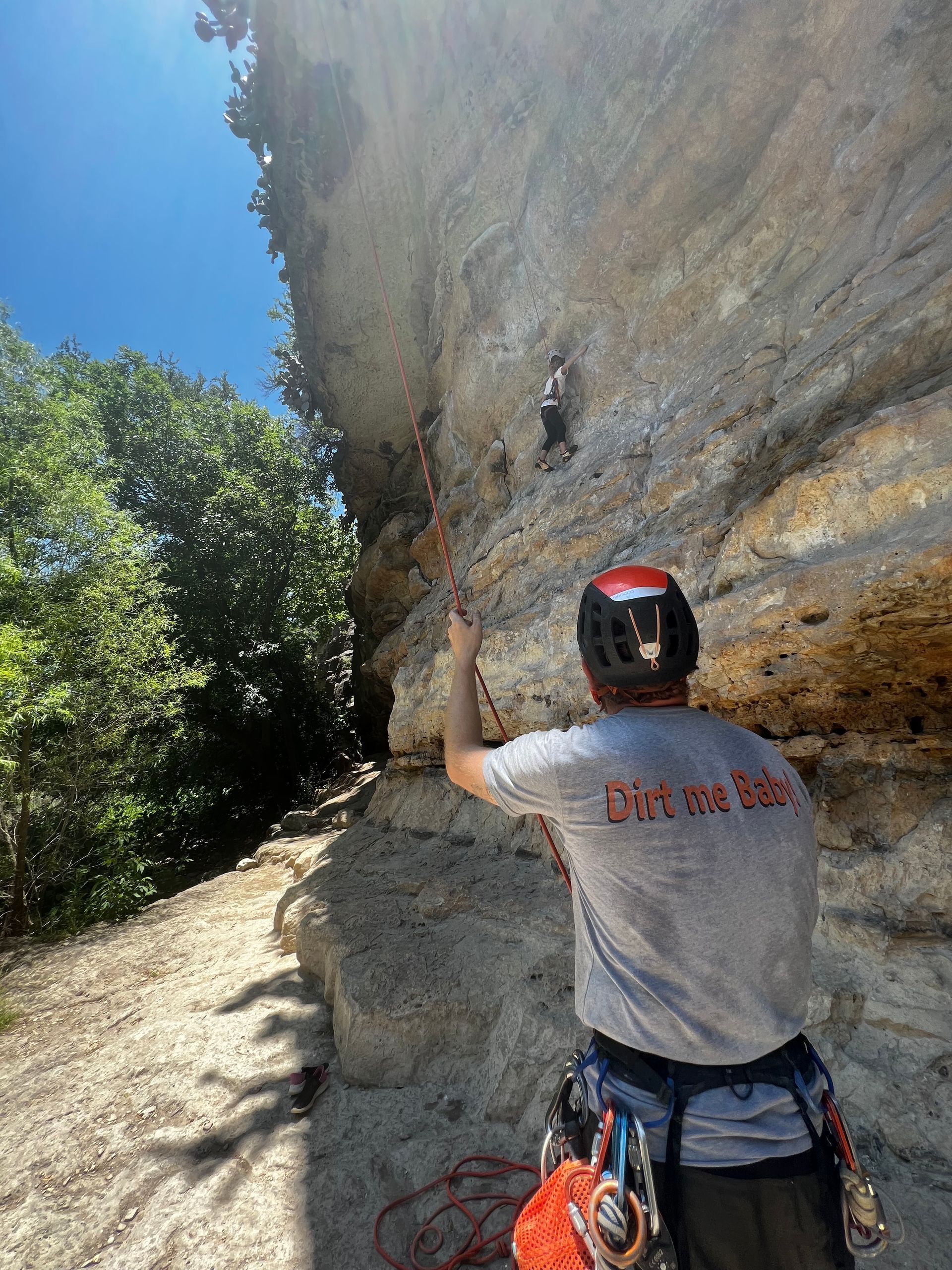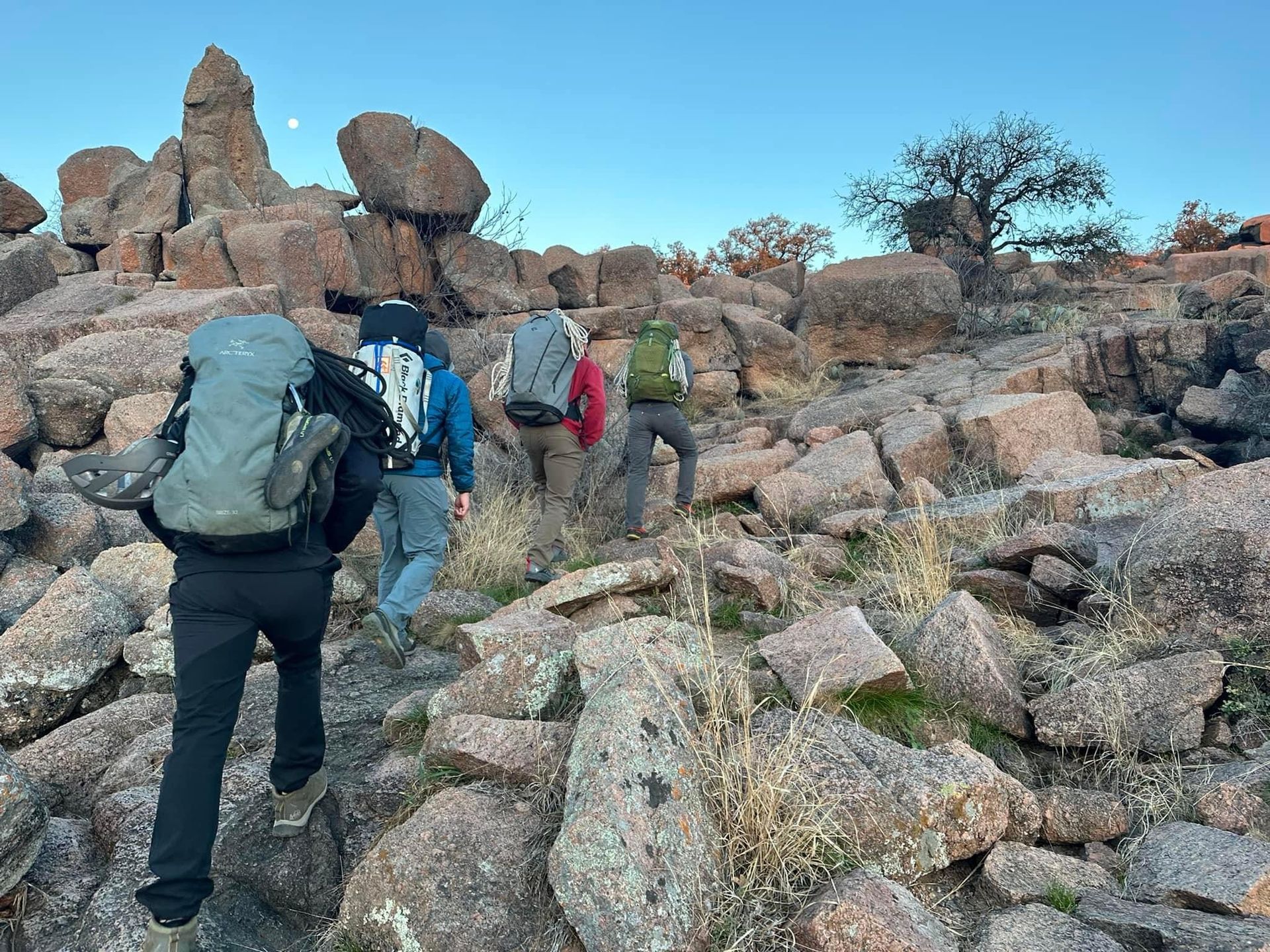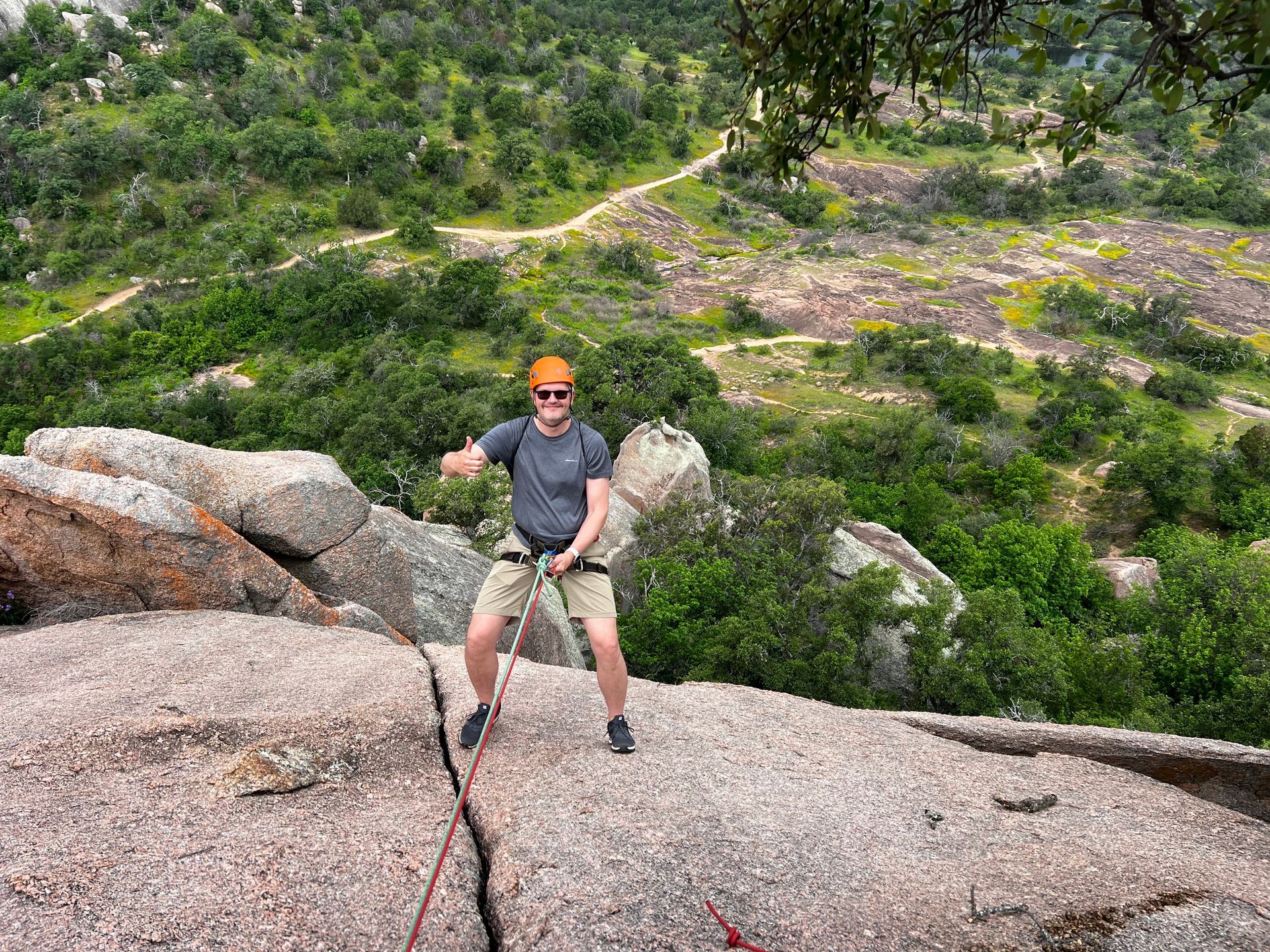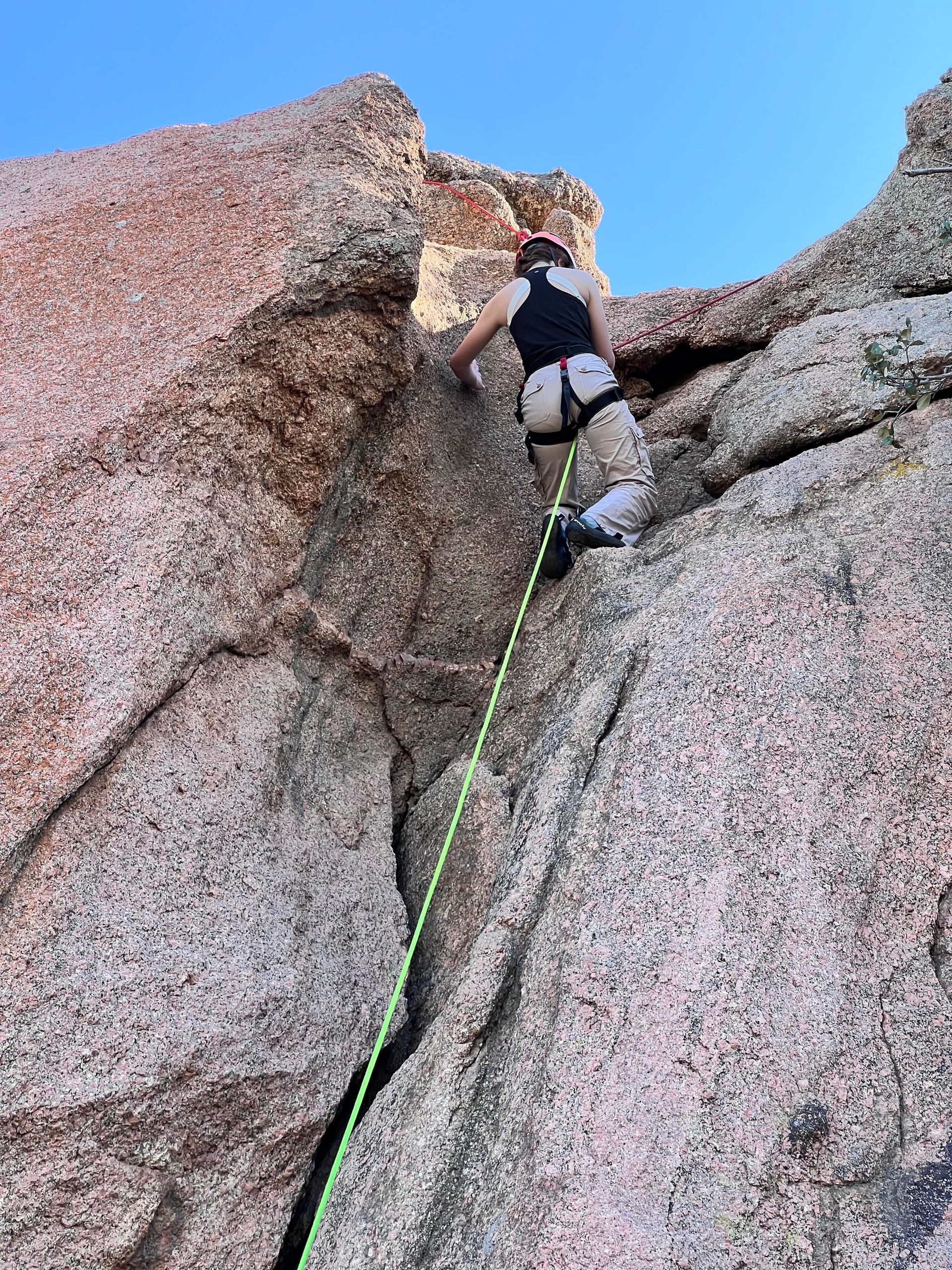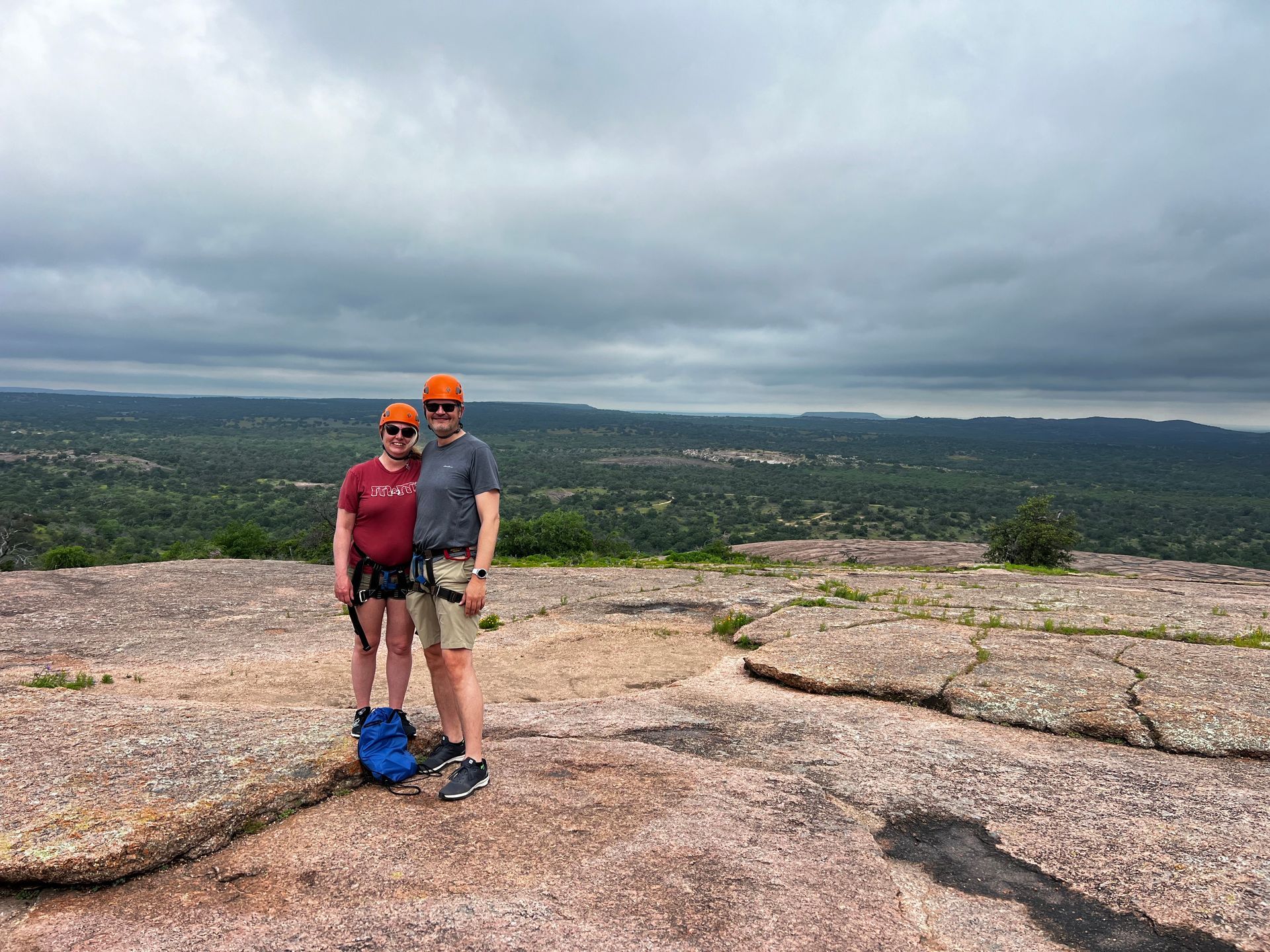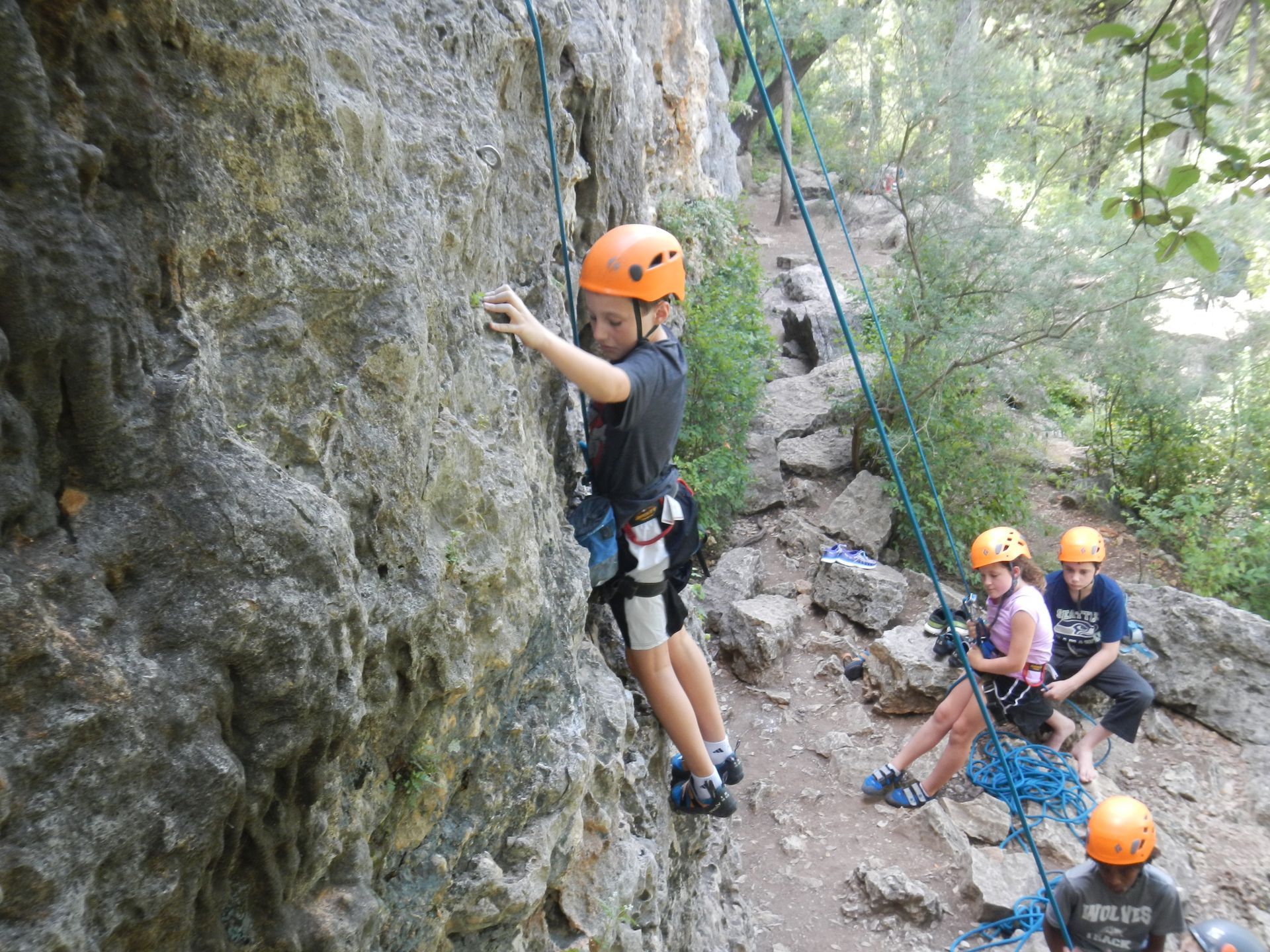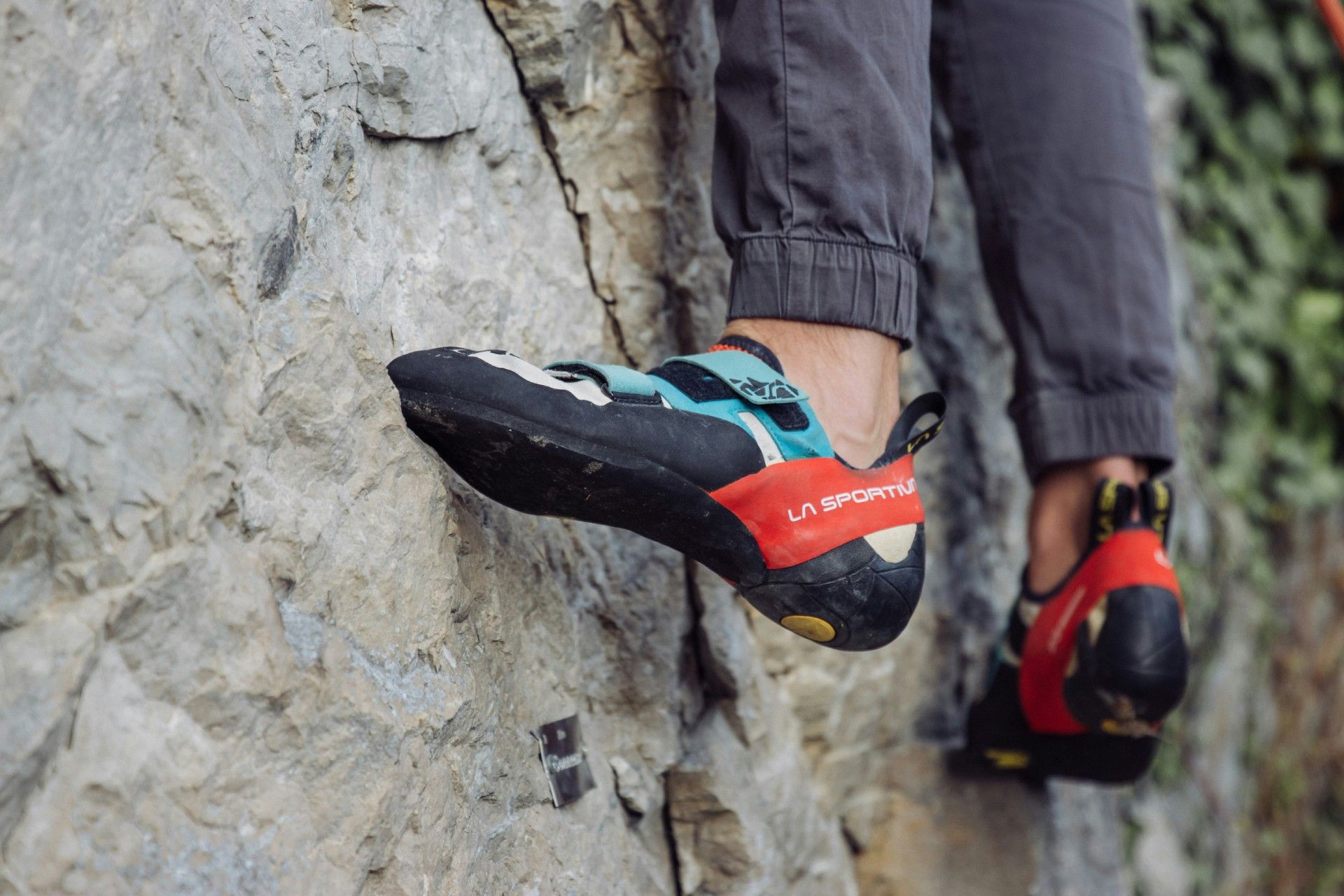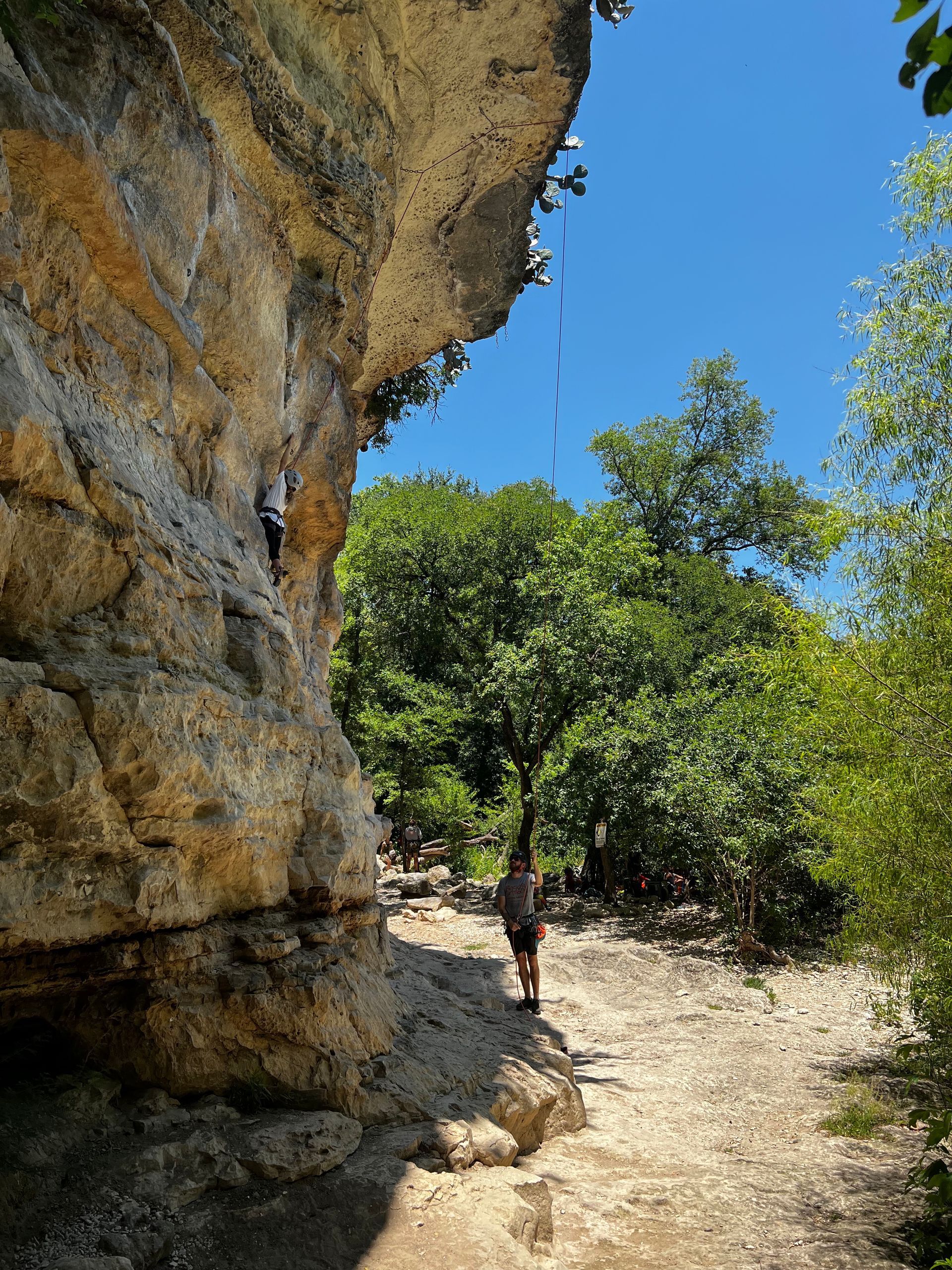The Difference Between Gym Climbing vs Outdoor Climbing in Texas
If you’ve been hitting the indoor gym climbing scene and wondering what it’s like to try climbing outside, you’re not alone. Inside rock climbing helps you build strength, technique, and confidence, but outdoor rock climbing offers a completely different adventure—especially in Texas, where rugged limestone cliffs create unforgettable experiences.
Whether you're brand new to climbing or you’ve been exploring inside climbing walls for a while, here’s what you need to know about the differences between indoor climbing gear gyms and rock climbing outdoors in Texas.
Key Takeaways
- Gym climbing builds your foundation, while outdoor climbing in Texas elevates your skills with natural limestone, granite, and sandstone that challenge balance, footwork, and creativity.
- Indoor climbing gyms provide safety, rentals, and climate control, but outdoor climbing requires learning anchors, rope systems, and adapting to unpredictable weather and wildlife.
- Route ratings differ between gym walls and real rock, meaning the same grade outdoors often feels harder—making guided outdoor climbs the best way to progress safely.
- Climbing outdoors connects you with Texas landscapes like Enchanted Rock and Reimer’s Ranch, offering views, fresh air, and an experience far beyond the gym ceiling.
- Guided outdoor climbing trips provide gear, instruction, and safety, helping you transition from gym climbing to real rock with confidence and unforgettable memories.
The Setting: Bright Lights vs. Big Skies
Gyms are controlled environments with padded floors and climate control, perfect for learning the basics of rock climbing what is it all about. But rock outside? It’s just you, the rock, and the Texas sky overhead. Gyms are controlled environments, perfect for learning the basics. But outdoor climbing connects you with nature in a deeper way.
Places like Enchanted Rock, Reimer’s Ranch, and Lake Travis aren’t just great climbing spots, they’re part of the Texas landscape. You’ll hear birds instead of gym playlists.
You’ll smell cedar and limestone instead of chalk and plastic. And when you top out on a climb, your view isn’t the ceiling. It’s the Hill Country stretching out for miles.
Explore all of our
Texas climbing locations.
The Holds: Plastic vs. Real Rock
In the gym, you climb a climbing wall indoor with color-coded holds. On real rock, you’ll need to trust your instincts and problem-solve. Climbing outdoor challenges you to read natural features, just one reason why different styles of rock climbing outdoors will quickly level up your skills.
Climbing on natural limestone, sandstone, or granite sharpens your skills fast. You’ll learn how to look for features, find creative foot placements, and use balance in a new way. If you’re just starting out, we recommend reading our
Beginner's Guide to Outdoor Climbing in Texas.
Safety and Setup
In an outside in climbing gym, anchors and belay setups are ready for you. With rock climbing outdoor, you’ll need to know how to build anchors, manage rope systems, and be fully aware of your surroundings. Our guides will teach you rock climbing lead climbing skills so you can progress safely.
That’s why climbing outdoors for the first time is best done with a guide. Our
beginner outdoor climbing courses are built for people who want to make the leap from gym to crag safely. We’ll teach you how to climb with confidence while keeping safety front and center.
Weather, Wildlife, and... Wow, It’s Hot
Texas weather is unpredictable. Texas isn’t known for its gentle climate. Depending on the season, you might be climbing in 100-degree heat or bundling up on a windy morning. Rain can make some areas too slippery to climb, and you’ll definitely want to stay hydrated.
While indoor rock climbing equipment is always ready, rock climbing wall outside conditions can change fast. You’ll also want the right gear for indoor rock climbing and outdoor setups. We provide all the free rock climbing gear you need for guided trips, but learning the essentials of indoor rock climbing gear and ropes is key.
Then there’s the wildlife. From harmless snakes to curious squirrels, outdoor rock climbing comes with new variables you won’t find in a gym. But don’t worry, our experienced guides know how to keep you safe and prepared for whatever nature throws your way.
Gear Differences
In the gym, you usually rent gear (shoes, harness, chalk bag) and hop on the wall. For outdoor climbing, you’ll need a little more. Rock-About provides gear for all our guided trips, but it helps to know what you're using and why.
Want to know what shoes work best on Texas limestone? Check out our guide on Footwear for Climbing in Texas.
Route Ratings and Expectations
A 5.9 on an inside climbing wall may feel easy, but the same grade during rock climbing outdoor might test your limits. That’s part of why is rock climbing hard is a common question among gym climbers transitioning to rock climbing in house or rock climbing outdoors.
Route Ratings and Expectations
A 5.9 on an inside climbing wall may feel easy, but the same grade during rock climbing outdoor might test your limits. That’s part of why is rock climbing hard is a common question among gym climbers transitioning to rock climbing in house or rock climbing outdoors.
The Experience: Community vs. Connection
Climbing gyms are social. They’re a great place to meet people, hang out, and cheer each other on. Outdoor climbing is social in a different way. You’ll bond with your group over shared challenges, long belay sessions, and lunch breaks under the trees.
It’s not just about sending a route. It’s about disconnecting from your phone, soaking in your surroundings, and realizing what you’re capable of. As we like to say: a day of climbing, a lifetime of memories.
Ready to experience it for yourself? Book a
guided climbing trip and make your first outdoor climb a safe and unforgettable one.
Want to Go Bigger?
If you've climbed outdoors a few times and you're ready to take things to the next level, our
advanced climbing courses and
group clinics are designed to challenge and inspire you. Whether you're learning to lead or mastering anchors, we'll help you level up.
Why Outdoor Climbing Is Worth It
Indoor climbing gear gyms are fun and social. But outdoors climbing offers deep connection. You’ll bond with friends, test yourself, and appreciate the beauty around you.
So, is rock climbing a sport worth pursuing outside the gym? Absolutely. It’s an activity that combines fitness, adventure, and problem-solving.
Explore our outdoor climbing adventures and let’s hit the rocks. Join one of our Texas adventures and discover the thrill of rock climbing and making lifelong memories.
Frequently Asked Questions
Here are some common questions people ask about the differences between gym climbing and outdoor climbing in Texas.
What is the difference between gym climbing and outdoor climbing?
Gym climbing happens in a controlled space with color-coded holds, padded floors, and set routes. Outdoor climbing in Texas takes place on natural rock like limestone or granite, where routes aren’t marked. It requires problem-solving, adapting to weather, and learning anchor systems, but offers stunning scenery and a more adventurous experience.
Is outdoor climbing harder than gym climbing?
Yes, many climbers find outdoor climbing more challenging. A grade that feels easy indoors often feels tougher outside because natural rock requires balance, creativity, and confidence in less predictable holds. Outdoor climbing also adds factors like weather and rock texture that don’t exist in the gym.
Is indoor climbing safer than outdoor climbing?
Indoor climbing is generally safer because gyms provide pre-set anchors, padded floors, and staff supervision. Outdoors, you need to manage anchors, ropes, and environmental hazards yourself. That’s why most beginners transition outdoors with guides to learn safe practices before climbing independently.
Why are climbing gyms so popular?
Climbing gyms are convenient, safe, and social. They let people climb year-round regardless of weather, provide rental gear, and constantly change routes for variety. For beginners, gyms are an easy way to learn climbing basics before trying the more unpredictable outdoor environment.
What gear do you need for outdoor climbing in Texas?
In gyms, you usually just need shoes, a harness, and chalk. Outdoors in Texas, you’ll also need ropes, helmets, belay devices, and anchor systems. Many guided trips provide all the necessary equipment, making it easier for gym climbers to try outdoor routes safely.
How does Texas weather affect outdoor climbing?
Texas weather can be extreme and unpredictable. Summer heat, sudden rain, or cold winds can all impact climbing conditions. Wet rock becomes slippery, and high heat requires extra hydration. Being prepared with the right gear and climbing at the right times of year is key.
What climbing areas in Texas are best for beginners?
Popular beginner-friendly spots include Enchanted Rock, Reimer’s Ranch, and Lake Travis. These areas offer a range of routes, beautiful scenery, and well-established climbing communities. Guided trips are especially useful here, giving first-timers safe introductions to outdoor climbing.
Do climbing grades mean the same indoors and outdoors?
Not exactly. A grade like 5.9 indoors may feel comfortable, but the same rating outdoors often feels tougher. Natural rock introduces variables like smaller holds, tricky angles, and more technical footwork. Many climbers use outdoor sessions to refine their skills beyond what gym grades suggest.
What’s the biggest benefit of outdoor climbing compared to gyms?
The biggest difference is the connection to nature. While gyms focus on fitness and community, outdoor climbing immerses you in Texas landscapes, wildlife, and big sky views. It combines challenge with adventure, turning each climb into an unforgettable experience beyond just training.
Should I start outdoor climbing with a guide?
Yes, especially if you’re moving from the gym to real rock. Guides teach anchor building, rope management, and safe practices while providing gear. They help you progress confidently and avoid common mistakes, making your first outdoor climbs safer and more rewarding.

